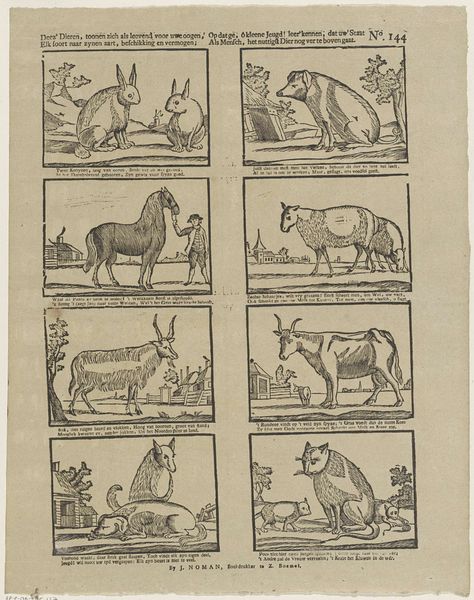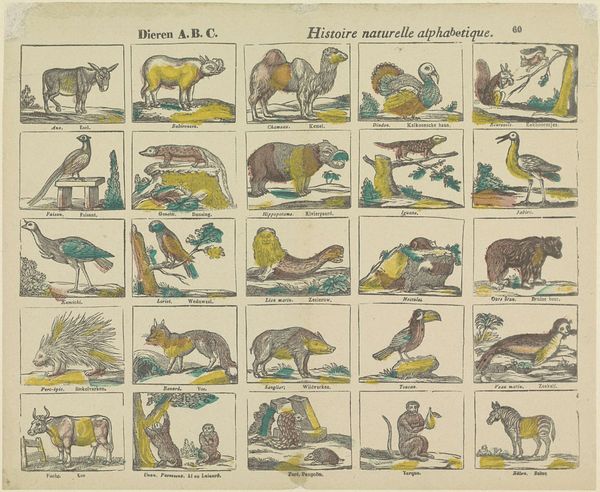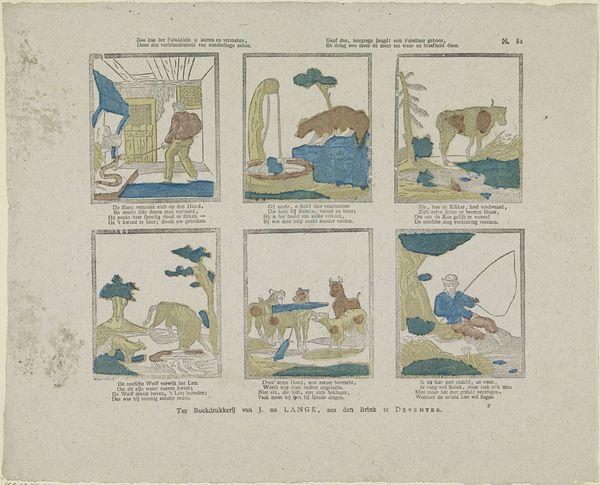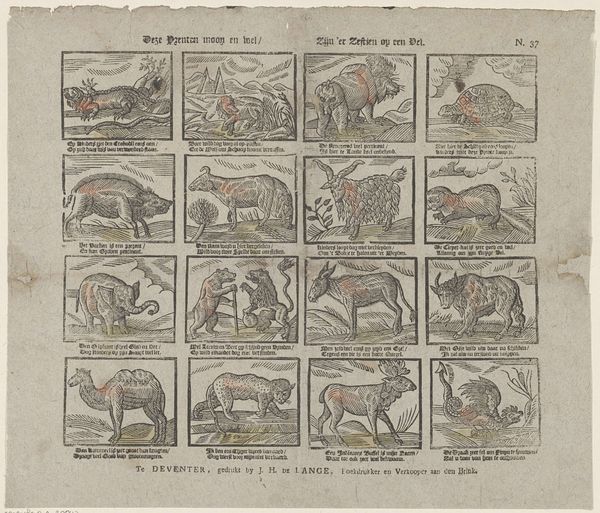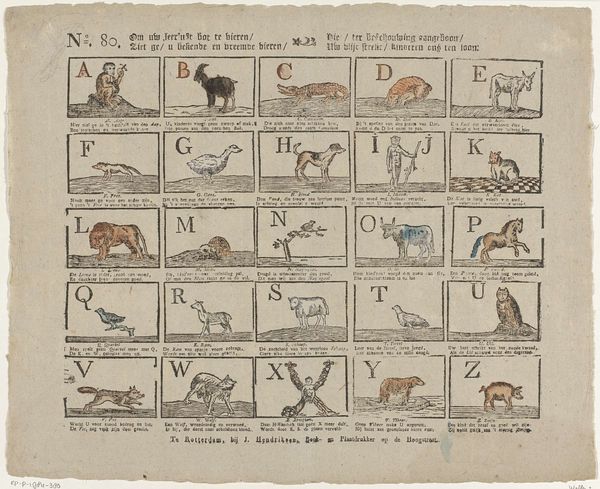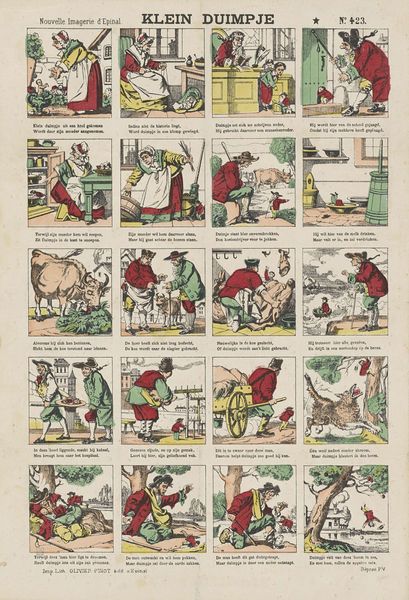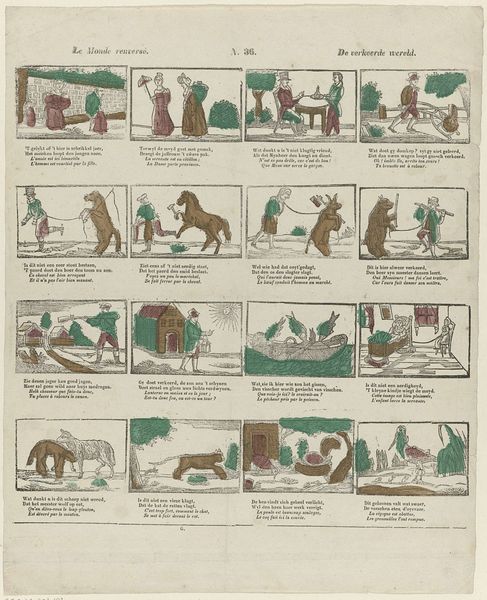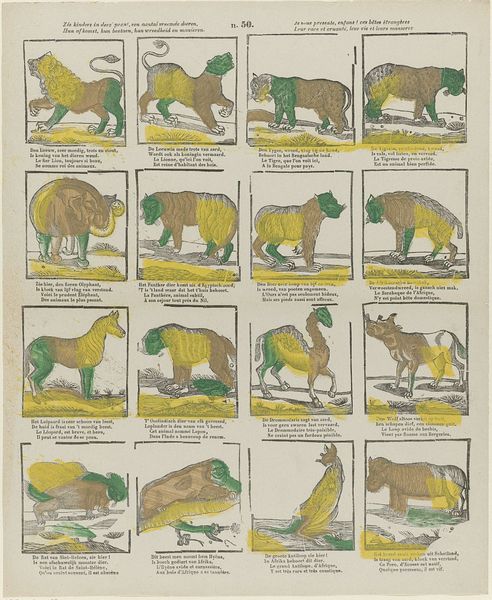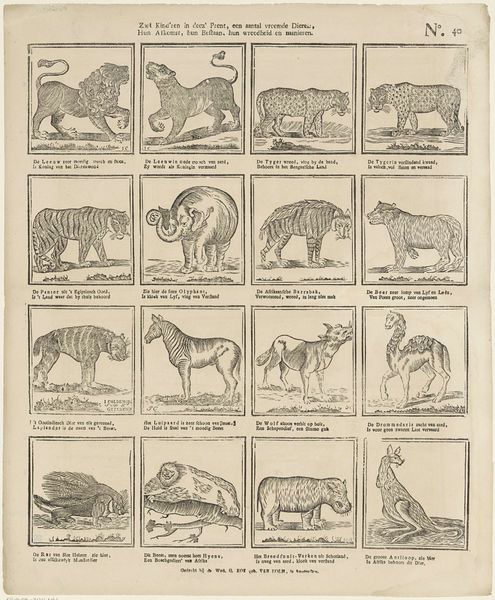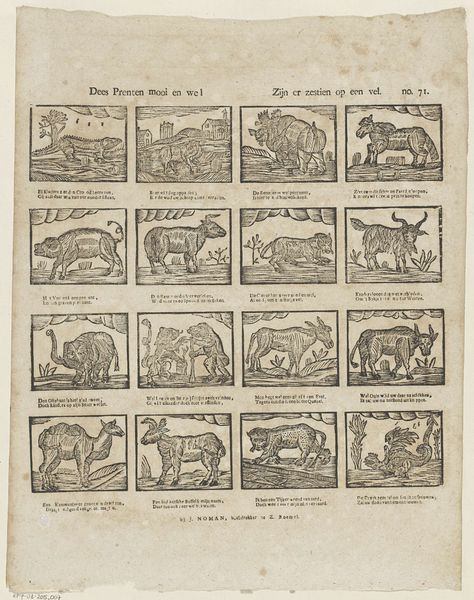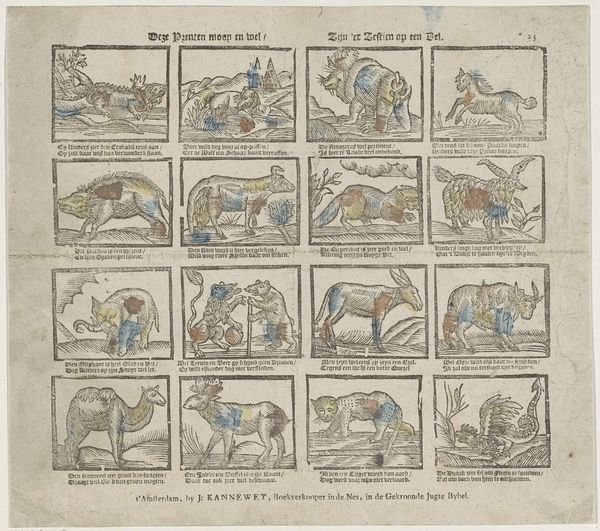
print, etching, engraving
#
comic strip sketch
#
quirky illustration
#
quirky sketch
# print
#
etching
#
personal sketchbook
#
sketchwork
#
ink drawing experimentation
#
sketchbook drawing
#
genre-painting
#
storyboard and sketchbook work
#
cartoon carciture
#
naturalism
#
sketchbook art
#
engraving
Dimensions: height 311 mm, width 394 mm
Copyright: Rijks Museum: Open Domain
Curator: This print, "Verschillende dieren / Différens animaux" by Glenisson & Zonen, likely dates between 1856 and 1900. It appears to be an etching, perhaps intended as a study aid or an early form of visual learning tool. I am intrigued by the simplistic way the natural world is composed here. Editor: It feels like a quirky, proto-scientific illustration, doesn’t it? The use of block colors is so odd. How do you interpret the arrangement of these animals, all presented in these artificial boxes? Curator: The arrangement, segmented as it is, invites a structural analysis. Consider each animal within its bounded square: what is prioritized? Observe the stark outlines and the limited, almost arbitrary color palette. Are they emphasizing a superficial categorization? The visual choices downplay naturalism in favor of… what? Perhaps symbolic representation through color. Editor: So you’re saying the colors and borders aren't about representing the actual animals, but about communicating something else? Could the animals themselves be seen as signs within a larger structure? Curator: Precisely. We might consider a semiotic reading, investigating what systems of meaning are being employed. The juxtaposition of seemingly disparate creatures—bear, camel, lynx—invites a taxonomy, not necessarily biological, but potentially linguistic or even moral. Are these boxes serving as discrete linguistic units within a broader visual language? Editor: That's a fascinating perspective! I initially saw it as a simple, slightly clumsy illustration, but the focus on structure makes me see it as more deliberate and complex. I see now it opens a window onto representational strategies that rely less on direct observation and more on conceptual order. Curator: Indeed. The piece reveals how form itself communicates, quite apart from any representational accuracy. By foregoing surface realism, it reveals something deeper about the artifice of classification.
Comments
No comments
Be the first to comment and join the conversation on the ultimate creative platform.

